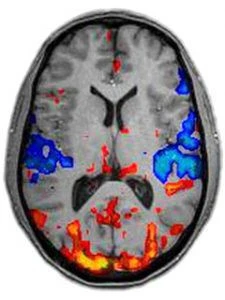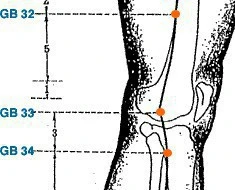Do Men and Women Respond Differently To Acupuncture? And What Does It Mean?
There are literally volumes of acupuncture studies. Many use fairly standard research procedures including trying to have a reasonable number of men and women in studies where this is possible. While the vast majority of those studies look at the general overall outcome, which is largely of primary importance to the patient certainly, it is rare that look at gender specific differences in responses to the treatment.
A group of researchers from Korea, the Netherlands and the US recently conducted a study that begins the scientific exploration of differing responses to acupuncture points based on gender. Results of this avenue of research could lead to practical clinical choices we make when developing a point protocol for a patient.
Truth be told there are already some aspects of existing theory within Chinese Medicine which might for example lead a practitioner to utilize points on one side of the body for a man and on another side for a woman. Those, however, come from theories within Chinese Medicine  and from the collective wisdom of generations of practitioners watching over their clinical results and adjusting their techniques, theory and choices as appropriate.
and from the collective wisdom of generations of practitioners watching over their clinical results and adjusting their techniques, theory and choices as appropriate.
The study I'm discussing today, however, is different. Researchers here are using modern western techniques, in this case a fMRI, to analyze brain changes to acupuncture and seeing if gender dictates what areas of the brain light up in response to a particular point.
To conduct the study, researchers recruited 19 healthy individuals - 9 male participants and 10 female. They then observed which areas of the brain were affected by the needling of a particular acupuncture point.
 For the purposes of this study they used the point GB 34. The point is found in a depression anterior and inferior to the head of the fibula. It is a very commonly used point for a range of tissue and ligament issues in the body - pain, restricted movement, as well as a range of digestive issues.
For the purposes of this study they used the point GB 34. The point is found in a depression anterior and inferior to the head of the fibula. It is a very commonly used point for a range of tissue and ligament issues in the body - pain, restricted movement, as well as a range of digestive issues.
As with any number of the fMRI studies done with acupuncture, needling the point activated a number of areas in the brain. The researchers, however, did notice a difference in responses between genders - "relative to males, females exhibited greater brain activation in the right-sided postcentral gyrus, precentral gyrus, precuneus, postcentral gyrus, inferior parietal lobule, declive, middle occipital gyrus and parahippocampal gyrus".
This is an interesting start and a worthy pursuit of further acupuncture studies. However, a few minutes of thought immediately bring about the huge rabbit hole you are jumping into when trying to translate these results into practical clinical changes or to even understand the results. One immediate consideration is how broadly certain acupuncture points affect the body.
One thing we know about acupuncture is that for the most part it appears to merely ask or draw attention to certain functions of the body. Due to this it is rare that an acupuncture point always has the same effect on every single person - particularly if you were to study people with broad ranges of conditions. While it is in no way this simple, to some degree you could use the same set of points on someone with hypertension, for example, as you could with hypotension. At a basic level many of the points appear to ask the parts of the brain that control blood pressure for example to evaluate what it is doing and perhaps consider a change. This opposed to a western drug, for example, which might dictate an opening of vessels chemically to lower blood pressure.
What this means, then, is that it would take a considerable number of studies to even begin to ascertain whether these changes noticed are based on gender or on differences between the individuals themselves with some common aspects being their gender.
Further, the idea of using "healthy" participants neglects the fact that no such thing really exists in pure Chinese Medicine terms. Everyone has a pattern or a tcm diagnosis. In fact one of the overarching values of Chinese Medicine is the ability to treat these patterns before the symptoms we call "health issues" even develop. It is at heart a preventative medicine.
Regardless the more studies that evaluate the deep changes in the body from even single acupuncture points are valuable in my opinion. But our systems of analysis may have to be adjusted when considering medicines that are more systemic and balancing in nature as opposed to their arguably more controlling western medicine counterparts. Also, a consideration of the time that it takes for a deep evaluation of a single acupuncture point might have to weighed against fine tuning existing diagnostic procedures and protocols for global health epidemics like diabetes for example.
In my opinion, we are still far off worldwide from a proper utilization of Chinese Medicine. While these studies are interesting, they are closer to trying to unlock the genetic codes in the body. The difference between what you find and the true clinical value of what you found is often great. While in theory there is the potential for a deep imprint on the clinical practice of acupuncture from what is found in these studies, the potential for expanding the utilization of what we currently know would lead to far greater results in aiding the health needs of the global population at the present time.
tag @yinyanghouse for questions/comments